Taiwan Power Co (Taipower, 台電) and the New Taipei City Government in May last year agreed to allow the activation of a spent fuel storage facility for the Jinshan Nuclear Power Plant in Shihmen District (石門). The deal ended eleven years of legal wrangling. According to the Taipower announcement, the city government engaged in repeated delays, failing to approve water and soil conservation plans.
Taipower said at the time that plans for another dry storage facility for the Guosheng Nuclear Power Plant in New Taipei City’s Wanli District (萬里) remained stuck in legal limbo. Later that year an agreement was reached for the spent fuel at the Guosheng site. The spent fuel is expected to be removed beginning next year.
Catch that? These agreements came after Chinese Nationalist Party (KMT) New Taipei City Mayor Hou You-yi (侯友宜), the party’s 2024 presidential candidate, and his predecessor had blocked construction of a spent fuel storage facility for 11 years. The city even filed several lawsuits against Taipower to stop waste storage within its boundaries, as Chen Shih-kai (陳世凱), spokesperson for then-vice president William Lai’s (賴清德) presidential campaign, pointed out during the election last year.
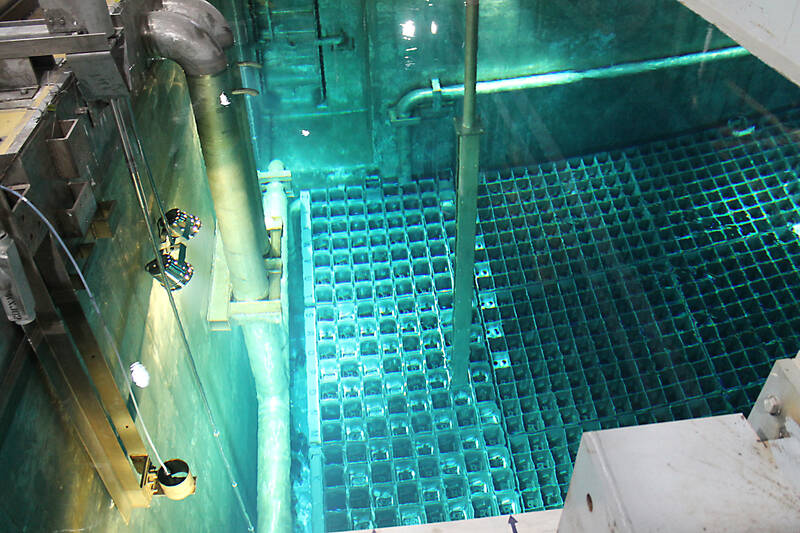
Photo courtesy of Taipower
The consequences of not removing spent fuel clogging the reactor pools had been clear for years. For example, the Liberty Times in May 2014 reported on Taipower’s announcement that the Jinshan plant could be mothballed in 2015 due to the lack of storage space for nuclear waste. It was officially closed in 2019. Guosheng followed suit in 2021, shuttering six months early because its spent fuel pool was full.
Eleven years of foot-dragging, during which time both nuclear plants in the north were closed. If a party truly and vigorously supported nuclear power, wouldn’t removing the spent fuel and storing it to keep the plants running have been a priority? The KMT controlled the legislature until 2016. It could have easily passed legislation to enable the plants to dry cask the spent fuel and erect a framework for continued operation. It did not.
Instead, it looks very much like KMT policy during that period was to force closure of the plants by filling them up with spent fuel and then blame the Democratic Progressive Party (DPP) for closing them. That is in fact what happened. If KMT rhetoric is ignored, it is obvious who forced the closure of the plants in the north.
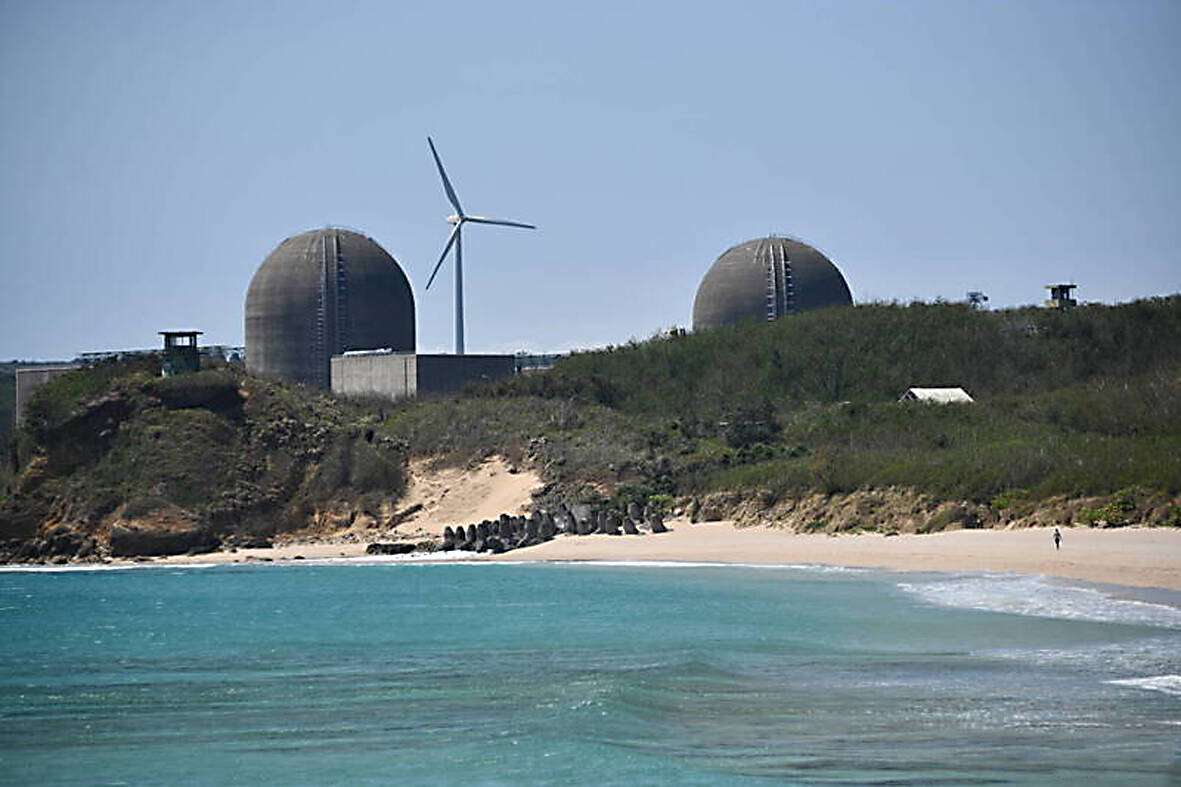
Photo: TT file photo
REFERENDUMS
Consider also the Fourth Nuclear Power plant. Ground was broken on the plant in 1999 under a KMT president. It was shuttered in April of 2014 under a KMT president — after all the contracts with local firms had been paid off. Again, the KMT controlled the legislature throughout this period and could have made the plant into a showcase for a national nuclear power program. Instead, it became mired in repeated referendum attempts, including one sponsored by 32 KMT legislators. In August of 2014 the Ministry of Economic Affairs (MOEA) proposed halting construction for three years until a referendum was held.
This pattern of submitting nuclear power to referendum after plant closures has been maintained. KMT leaders in 2018 promoted a referendum on nuclear power which they called “Go Green with Nuclear” (以核養綠). Jinshan was slated to begin decommissioning late that year, with Guosheng to follow in 2021. Then came the KMT, promoting an after-the-fact referendum on nuclear power (which passed).
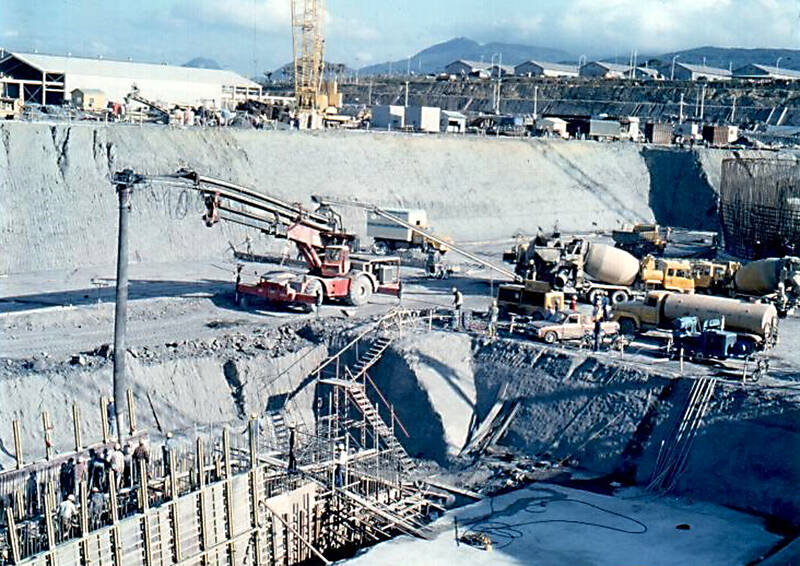
Photo courtesy of Taipower
Another referendum to restart the Fourth Nuclear Power plant was defeated in 2021, but the result lacked a large enough proportion of the electorate to be binding. Guosheng was closed during the run-up to the referendum.
At present the Ma-anshan Nuclear Power Plant in Pingtung is being decommissioned. Once again, now that the plant is safely closed, the KMT is calling for a referendum on re-opening it.
The inference is obvious: the KMT uses referendums as a performative pro-nuclear stance. This permits the DPP government to continue closing the plants, which it must because they have reached the end of their 40 year lives and their spent fuel pools are full, while the KMT can then go ahead and blame the DPP for their closure. The noisy use of public referendums enables the KMT to avoid taking responsibility for the numerous opportunities it has ignored over the years to continue operating the plants.
As the head of the nuclear materials control division observed during legislative questioning on the Ma-anshan referendum, no candidate sites for storing Ma-anshan’s spent fuel have been identified, and the 2028 goal for finding such a site is unlikely to be achieved. Note that even if by some miracle the 2028 goal is met, an additional 2-3 years of bidding, permitting and construction is necessary before removal of the spent fuel can begin, followed by additional years for permitting and refurbishing the plant. If one does not like nuclear power in Taiwan, this is a very safe referendum to propose.
The pattern is clear: the lack of a site to put spent fuel blocks continued operation, yet the KMT, which has for years known that Ma-anshan must be closed this year, has done nothing. Strange, if they truly support nuclear power.
Moreover, critics of the Ma-anshan referendum observed that it targets a plant in the south. Why doesn’t it include the plants in the north? There is no reason the KMT can’t sponsor legislation or even a referendum for re-opening plants in the north. But it has not done so.
The Ma-anshan referendum as passed by the legislature, controlled by the KMT and its allies, calls for the re-opening of Ma-anshan if safety standards can be met, a longstanding KMT position, one advocated by Hou You-yi in his 2024 election run. Sounds reasonable.
BLAME DPP
A cynical observer might conclude that this stance invites Taipower and oversight bodies of the DPP government to decline re-opening the plant by citing a lack of safety. In which case, the KMT can then blame the DPP. But it is worse than that.
Earlier this month, the KMT threatened to withhold a NT$410 billion (US$13.54 billion) bailout package for Taipower unless it extended the service life of the nation’s last remaining nuclear reactor. During a separate meeting, Minister of Environment Peng Chi-ming (彭啟明) pointed out that no legal mechanism exists for the government to evaluate a reactor’s safety before extending its operational permit.
The KMT currently controls the legislature, and did until 2016. There is now, and was for many years, nothing to stop it from enacting a legal framework for evaluating the safety of reactor restarts. Indeed, if it really wanted them restarted, that should have been a priority.
That is why the public stance of the KMT is to restart the reactors, if they are ruled safe by oversight agencies. The party knows perfectly well the nation has no legal process for assessing safety and restarting them.
What is the KMT’s real nuclear power stance?
Notes from Central Taiwan is a column written by long-term resident Michael Turton, who provides incisive commentary informed by three decades of living in and writing about his adoptive country. The views expressed here are his own.
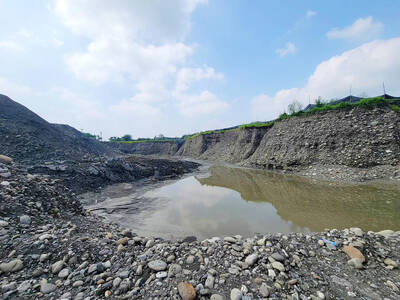
Last week the story of the giant illegal crater dug in Kaohsiung’s Meinong District (美濃) emerged into the public consciousness. The site was used for sand and gravel extraction, and then filled with construction waste. Locals referred to it sardonically as the “Meinong Grand Canyon,” according to media reports, because it was 2 hectares in length and 10 meters deep. The land involved included both state-owned and local farm land. Local media said that the site had generated NT$300 million in profits, against fines of a few million and the loss of some excavators. OFFICIAL CORRUPTION? The site had been seized
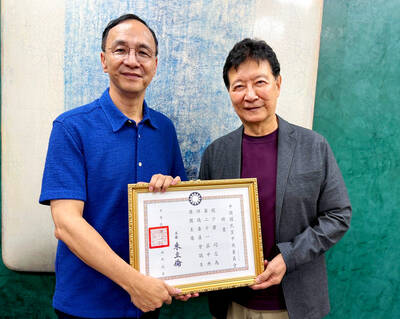
Next week, candidates will officially register to run for chair of the Chinese Nationalist Party (KMT). By the end of Friday, we will know who has registered for the Oct. 18 election. The number of declared candidates has been fluctuating daily. Some candidates registering may be disqualified, so the final list may be in flux for weeks. The list of likely candidates ranges from deep blue to deeper blue to deepest blue, bordering on red (pro-Chinese Communist Party, CCP). Unless current Chairman Eric Chu (朱立倫) can be convinced to run for re-election, the party looks likely to shift towards more hardline
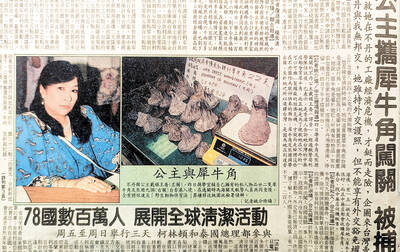
Sept. 15 to Sept. 21 A Bhutanese princess caught at Taoyuan Airport with 22 rhino horns — worth about NT$31 million today — might have been just another curious front-page story. But the Sept. 17, 1993 incident came at a sensitive moment. Taiwan, dubbed “Die-wan” by the British conservationist group Environmental Investigation Agency (EIA), was under international fire for being a major hub for rhino horn. Just 10 days earlier, US secretary of the interior Bruce Babbitt had recommended sanctions against Taiwan for its “failure to end its participation in rhinoceros horn trade.” Even though Taiwan had restricted imports since 1985 and enacted

Enter the Dragon 13 will bring Taiwan’s first taste of Dirty Boxing Sunday at Taipei Gymnasium, one highlight of a mixed-rules card blending new formats with traditional MMA. The undercard starts at 10:30am, with the main card beginning at 4pm. Tickets are NT$1,200. Dirty Boxing is a US-born ruleset popularized by fighters Mike Perry and Jon Jones as an alternative to boxing. The format has gained traction overseas, with its inaugural championship streamed free to millions on YouTube, Facebook and Instagram. Taiwan’s version allows punches and elbows with clinch striking, but bans kicks, knees and takedowns. The rules are stricter than the